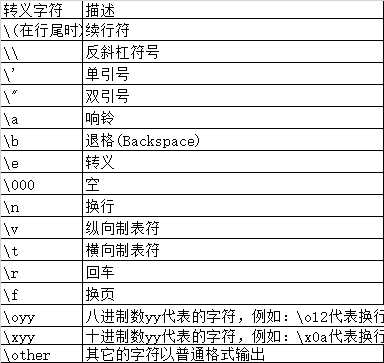标签:结果 分享 模板 repr 形式 png cap 大括号 若是
%o —— oct 八进制
%d —— dec 十进制
%x —— hex 十六进制
>>> print(‘%o‘ % 20) 24 >>> print(‘%d‘ % 20) 20 >>> print(‘%x‘ % 20) 14
%f ——保留小数点后面六位有效数字
%.3f,保留3位小数位
%e ——保留小数点后面六位有效数字,指数形式输出
%.3e,保留3位小数位,使用科学计数法
%g ——在保证六位有效数字的前提下,使用小数方式,否则使用科学计数法
%.3g,保留3位有效数字,使用小数或科学计数法
>>> print(‘%f‘ % 1.11) # 默认保留6位小数 1.110000 >>> print(‘%.1f‘ % 1.11) # 取1位小数 1.1 >>> print(‘%e‘ % 1.11) # 默认6位小数,用科学计数法 1.110000e+00 >>> print(‘%.3e‘ % 1.11) # 取3位小数,用科学计数法 1.110e+00 >>> print(‘%g‘ % 1111.1111) # 默认6位有效数字 1111.11 >>> print(‘%.7g‘ % 1111.1111) # 取7位有效数字 1111.111 >>> print(‘%.2g‘ % 1111.1111) # 取2位有效数字,自动转换为科学计数法 1.1e+03
round(number[, ndigits]) 参数: number - 这是一个数字表达式。 ndigits - 表示从小数点到最后四舍五入的位数。默认值为0。 返回值 - 该方法返回x的小数点舍入为n位数后的值。
round()函数只有一个参数,不指定位数的时候,返回一个整数,而且是最靠近的整数,类似于四舍五入,当指定取舍的小数点位数的时候,一般情况也是使用四舍五入的规则,但是碰到.5的情况时,如果要取舍的位数前的小数是奇数,则直接舍弃,如果是偶数则向上取舍。
注:“.5”这个是一个“坑”,且python2和python3出来的接口有时候是不一样的,尽量避免使用round()函数吧
>>> round(1.1125) # 四舍五入,不指定位数,取整 1 >>> round(1.1135,3) # 取3位小数,由于3为奇数,则向下“舍” 1.113 >>> round(1.1125,3) # 取3位小数,由于2为偶数,则向上“入” 1.113 >>> round(1.5) # 无法理解,查阅一些资料是说python会对数据进行截断,没有深究 2 >>> round(2.5) # 无法理解 2 >>> round(1.675,2) # 无法理解 1.68 >>> round(2.675,2) # 无法理解 2.67 >>>
%s
%10s——右对齐,占位符10位
%-10s——左对齐,占位符10位
%.2s——截取2位字符串
%10.2s——10位占位符,截取两位字符串
>>> print(‘%s‘ % ‘hello world‘) # 字符串输出 hello world >>> print(‘%20s‘ % ‘hello world‘) # 右对齐,取20位,不够则补位 hello world >>> print(‘%-20s‘ % ‘hello world‘) # 左对齐,取20位,不够则补位 hello world >>> print(‘%.2s‘ % ‘hello world‘) # 取2位 he >>> print(‘%10.2s‘ % ‘hello world‘) # 右对齐,取2位 he >>> print(‘%-10.2s‘ % ‘hello world‘) # 左对齐,取2位 he


相对基本格式化输出采用‘%’的方法,format()功能更强大,该函数把字符串当成一个模板,通过传入的参数进行格式化,并且使用大括号‘{}’作为特殊字符代替‘%’
位置匹配
(1)不带编号,即“{}”
(2)带数字编号,可调换顺序,即“{1}”、“{2}”
(3)带关键字,即“{a}”、“{tom}”
>>> print(‘{} {}‘.format(‘hello‘,‘world‘)) # 不带字段 hello world >>> print(‘{0} {1}‘.format(‘hello‘,‘world‘)) # 带数字编号 hello world >>> print(‘{0} {1} {0}‘.format(‘hello‘,‘world‘)) # 打乱顺序 hello world hello >>> print(‘{1} {1} {0}‘.format(‘hello‘,‘world‘)) world world hello >>> print(‘{a} {tom} {a}‘.format(tom=‘hello‘,a=‘world‘)) # 带关键字 world hello world
通过位置匹配
>>> ‘{0}, {1}, {2}‘.format(‘a‘, ‘b‘, ‘c‘) ‘a, b, c‘ >>> ‘{}, {}, {}‘.format(‘a‘, ‘b‘, ‘c‘) # 3.1+版本支持 ‘a, b, c‘ >>> ‘{2}, {1}, {0}‘.format(‘a‘, ‘b‘, ‘c‘) ‘c, b, a‘ >>> ‘{2}, {1}, {0}‘.format(*‘abc‘) # 可打乱顺序 ‘c, b, a‘ >>> ‘{0}{1}{0}‘.format(‘abra‘, ‘cad‘) # 可重复 ‘abracadabra‘
通过名字匹配
>>> ‘Coordinates: {latitude}, {longitude}‘.format(latitude=‘37.24N‘, longitude=‘-115.81W‘) ‘Coordinates: 37.24N, -115.81W‘ >>> coord = {‘latitude‘: ‘37.24N‘, ‘longitude‘: ‘-115.81W‘} >>> ‘Coordinates: {latitude}, {longitude}‘.format(**coord) ‘Coordinates: 37.24N, -115.81W‘
通过对象属性匹配
>>> c = 3-5j >>> (‘The complex number {0} is formed from the real part {0.real} ‘ ... ‘and the imaginary part {0.imag}.‘).format(c) ‘The complex number (3-5j) is formed from the real part 3.0 and the imaginary part -5.0.‘ >>> class Point: ... def __init__(self, x, y): ... self.x, self.y = x, y ... def __str__(self): ... return ‘Point({self.x}, {self.y})‘.format(self=self) ... >>> str(Point(4, 2)) ‘Point(4, 2)‘
通过下标或key匹配参数
>>> >>> coord = (3, 5) >>> ‘X: {0[0]}; Y: {0[1]}‘.format(coord) ‘X: 3; Y: 5‘ >>> a = {‘a‘: ‘test_a‘, ‘b‘: ‘test_b‘} >>> ‘X: {0[a]}; Y: {0[b]}‘.format(a) ‘X: test_a; Y: test_b‘
format()方法中<模板字符串>的槽除了包括参数序号,还可以包括格式控制信息。此时,槽的内部样式如下:
{<参数序号>: <格式控制标记>}
其中,<格式控制标记>用来控制参数显示时的格式,包括:<填充><对齐><宽度>,<.精度><类型>6 个字段,这些字段都是可选的,可以组合使用,逐一介绍如下。

<宽度>
指当前槽的设定输出字符宽度,如果该槽对应的format()参数长度比<宽度>设定值大,则使用参数实际长度。如果该值的实际位数小于指定宽度,则位数将被默认以空格字符补充。
<对齐>
指参数在<宽度>内输出时的对齐方式,分别使用<、>和^三个符号表示左对齐、右对齐和居中对齐。
<填充>
指<宽度>内除了参数外的字符采用什么方式表示,默认采用空格,可以通过<填充>更换。
s = "PYTHON" "{0:30}".format(s) Out[17]: ‘PYTHON ‘ "{0:>30}".format(s) Out[18]: ‘ PYTHON‘ "{0:*^30}".format(s) Out[19]: ‘************PYTHON************‘ "{0:-^30}".format(s) Out[20]: ‘------------PYTHON------------‘ "{0:3}".format(s) Out[21]: ‘PYTHON‘
逗号(,)
<格式控制标记>中逗号(,)用于显示数字的千位分隔符,例如:
"{0:-^20,}".format(1234567890) Out[24]: ‘---1,234,567,890----‘ "{0:-^20}".format(1234567890) #对比输出 Out[25]: ‘-----1234567890-----‘ "{0:-^20,}".format(12345.67890) Out[26]: ‘----12,345.6789-----‘
<.精度>
表示两个含义,由小数点(.)开头。对于浮点数,精度表示小数部分输出的有效位数。对于字符串,精度表示输出的最大长度。
"{0:.2f}".format(12345.67890) Out[29]: ‘12345.68‘ "{0:H^20.3f}".format(12345.67890) Out[30]: ‘HHHHH12345.679HHHHHH‘ "{0:.4}".format("PYTHON") Out[31]: ‘PYTH‘
<类型>
表示输出整数和浮点数类型的格式规则。对于整数类型,输出格式包括6 种:
"{0:b},{0:c},{0:d},{0:o},{0:x},{0:X}".format(425) Out[32]: ‘110101001,?,425,651,1a9,1A9‘
浮点数输出时尽量使用<.精度>表示小数部分的宽度,有助于更好控制输出格式。
"{0:e},{0:E},{0:f},{0:%}".format(3.14) Out[33]: ‘3.140000e+00,3.140000E+00,3.140000,314.000000%‘ "{0:.2e},{0:.2E},{0:.2f},{0:.2%}".format(3.14) Out[34]: ‘3.14e+00,3.14E+00,3.14,314.00%‘
2进制、8进制、10进制、16进制
>>> # format also supports binary numbers >>> "int: {0:d}; hex: {0:x}; oct: {0:o}; bin: {0:b}".format(42) ‘int: 42; hex: 2a; oct: 52; bin: 101010‘ >>> # with 0x, 0o, or 0b as prefix: >>> "int: {0:d}; hex: {0:#x}; oct: {0:#o}; bin: {0:#b}".format(42) # 在前面加“#”,则带进制前缀 ‘int: 42; hex: 0x2a; oct: 0o52; bin: 0b101010‘
(1)< (默认)左对齐、> 右对齐、^ 中间对齐、= (只用于数字)在小数点后进行补齐
(2)取位数“{:4s}”、"{:.2f}" 等
左中右对齐及位数补齐
>>> print(‘{} and {}‘.format(‘hello‘,‘world‘)) # 默认左对齐 hello and world >>> print(‘{:10s} and {:>10s}‘.format(‘hello‘,‘world‘)) # 取10位左对齐,取10位右对齐 hello and world >>> print(‘{:^10s} and {:^10s}‘.format(‘hello‘,‘world‘)) # 取10位中间对齐 hello and world >>> print(‘{} is {:.2f}‘.format(1.123,1.123)) # 取2位小数 1.123 is 1.12 >>> print(‘{0} is {0:>10.2f}‘.format(1.123)) # 取2位小数,右对齐,取10位 1.123 is 1.12 >>> ‘{:<30}‘.format(‘left aligned‘) # 左对齐 ‘left aligned ‘ >>> ‘{:>30}‘.format(‘right aligned‘) # 右对齐 ‘ right aligned‘ >>> ‘{:^30}‘.format(‘centered‘) # 中间对齐 ‘ centered ‘ >>> ‘{:*^30}‘.format(‘centered‘) # 使用“*”填充 ‘***********centered***********‘ >>>‘{:0=30}‘.format(11) # 还有“=”只能应用于数字,这种方法可用“>”代替 ‘000000000000000000000000000011‘
正负符号显示 %+f, %-f, 和 % f的用法 >>> ‘{:+f}; {:+f}‘.format(3.14, -3.14) # 总是显示符号 ‘+3.140000; -3.140000‘ >>> ‘{: f}; {: f}‘.format(3.14, -3.14) # 若是+数,则在前面留空格 ‘ 3.140000; -3.140000‘ >>> ‘{:-f}; {:-f}‘.format(3.14, -3.14) # -数时显示-,与‘{:f}; {:f}‘一致 ‘3.140000; -3.140000‘
>>> points = 19 >>> total = 22 >>> ‘Correct answers: {:.2%}‘.format(points/total) ‘Correct answers: 86.36%‘
>>> import datetime >>> d = datetime.datetime(2010, 7, 4, 12, 15, 58) >>> ‘{:%Y-%m-%d %H:%M:%S}‘.format(d) ‘2010-07-04 12:15:58‘
>>> ‘{:,}‘.format(1234567890) ‘1,234,567,890‘
>>> for align, text in zip(‘<^>‘, [‘left‘, ‘center‘, ‘right‘]): ... ‘{0:{fill}{align}16}‘.format(text, fill=align, align=align) ... ‘left<<<<<<<<<<<<‘ ‘^^^^^center^^^^^‘ ‘>>>>>>>>>>>right‘ >>> >>> octets = [192, 168, 0, 1] >>> ‘{:02X}{:02X}{:02X}{:02X}‘.format(*octets) ‘C0A80001‘ >>> int(_, 16) # 官方文档给出来的,无法在IDLE复现 3232235521 >>> >>> width = 5 >>> for num in range(5,12): ... for base in ‘dXob‘: ... print(‘{0:{width}{base}}‘.format(num, base=base, width=width), end=‘ ‘) ... print() ... 5 5 5 101 6 6 6 110 7 7 7 111 8 8 10 1000 9 9 11 1001 10 A 12 1010 11 B 13 1011
""" replacement_field ::= "{" [field_name] ["!" conversion] [":" format_spec] "}" conversion ::= "r" | "s" | "a" 这里只有三个转换符号,用"!"开头。 "!r"对应 repr();"!s"对应 str(); "!a"对应ascii()。 """ >>> "repr() shows quotes: {!r}; str() doesn‘t: {!s}".format(‘test1‘, ‘test2‘) "repr() shows quotes: ‘test1‘; str() doesn‘t: test2" # 输出结果是一个带引号,一个不带
# a.format(b) >>> "{0} {1}".format("hello","world") ‘hello world‘ # f"xxxx" # 可在字符串前加f以达到格式化的目的,在{}里加入对象,此为format的另一种形式: >>> a = "hello" >>> b = "world" >>> f"{a} {b}" ‘hello world‘ name = ‘jack‘ age = 18 sex = ‘man‘ job = "IT" salary = 9999.99 print(f‘my name is {name.capitalize()}.‘) print(f‘I am {age:*^10} years old.‘) print(f‘I am a {sex}‘) print(f‘My salary is {salary:10.3f}‘) # 结果 my name is Jack. I am ****18**** years old. I am a man My salary is 9999.990
标签:结果 分享 模板 repr 形式 png cap 大括号 若是
原文地址:https://www.cnblogs.com/dongye95/p/10197916.html